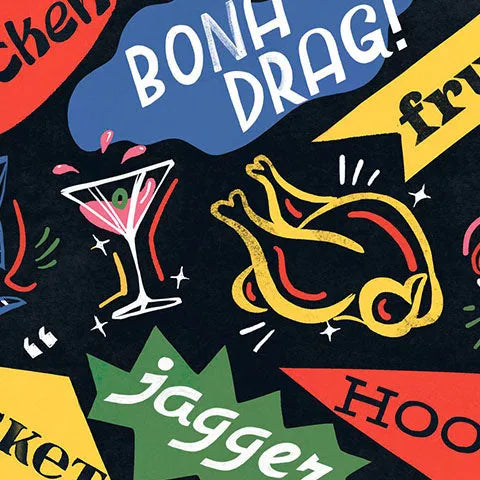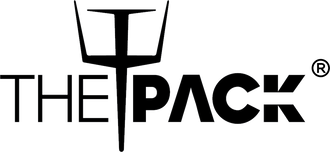
Polari Language
Polari: Decoding the Hidden Language Used by LGBTQ+ in the 20th Century - A Journey into Its Rich History
At a time when discrimination and societal prejudice against the members of the LGBTQ+ community was sky high, there was a need for members of the LGBTQ+ to come up with ways of keeping their secrets in society.
Up emerged a secret language, Polari, which emerged as a beacon of identity and resilience. This language, born out of necessity in the British gay subculture became the pinnacle of unity and a symbol of communication.
---

This article will look to unearth the rich history of the Polari language, its cultural impact, linguistic features, and how crucial its foundation was.
Historical Roots of Polari Language, What Necessitated its Formation?
To understand the Polari Language and appreciate it, it’s important to know how it was formed and the winding path it has followed to reach where it is. This section delves into how the Polari Language was formed.
Polari roots can be traced back to the 16th century according to some sources, but its rampant use was between 1930 and 1970.
Afraid of being arrested by the law enforcers as gay-ism was illegal, and the constant push by society to eradicate members of the gay community from society, the gays had to stay discreet if at all they were to survive in such a harsh environment.
This led to the formation of the Polari Language, which served as a communication tool for the gay community in a challenging setting.
---

Cultural Weaving of Polari Language: Linguistic Tapestry, Theatrical Origins, and its Use in Social Spaces
All Languages are works of art, portraying the meticulous effort and craftmanship dedicated to its construction, and so is the Polari language.
This secret language arose from the mixing of words from different languages such as English, Romani, Italian, Yiddish, Cockney rhyming slang, and back slang forming a distinctive vocabulary that mirrors the diverse character of the gay subculture.
The language was not only used for keeping secrets and privacy but it was also used to show unity and solidarity.
The Polari Language has always been evolving and getting new vocabularies. The poets, entertainers, musicians, and circus performers in the 20th century took every opportunity without hesitation to add flair to the language.
Most of the performers were from the gay community and adopted Polari as a way to form connections and identify like-minded individuals. Besides theatres, the Polari language infiltrated social spaces and was used in gay bars and clubs.
This was used as a secret language to navigate the hostile environment towards gay individuals. Polari helped the gay community to communicate despite societal limitations and barriers, which created a sense of belonging.
---

Decline, Silence, and Revival in the Modern Times of the Polari Language. What Led to its Decline and Revival?
As the acceptance of the LGBTQ+ community increased, the necessity for the Polari language decreased. A language that was once a vibrant linguistic code for the gay community started to die a slow natural death as the societal attitude towards gays changed.
Legal changes and advancements also engineered the death of the Polari language. The community and society at large became more educated about embracing diversity, though not fully, and so the laws surrounding the criminalization of gays started getting lifted and repealed.
The language entered into dead silence until just recently when the interest in the Polari language reignited. The Polari Language has recently become case studies in universities and some members of the LGBTQ+ community are arguing that the Language should be recognized and preserved as an essential part of cultural heritage.
---
Influence of Polari Language on Popular Culture and its Impact on LGBTQ Identity
Secrecy was not the only facet of Polari. The language has left an engraved mark on the entertainment industry and popular culture.
Most artists have incorporated the language in their work to narrate the story of what LGBTQ+ people go through and to challenge the societal norms and attitudes towards the community in the quest for justice and fairness to all.
To the LGBTQ+ community, the language has a very deeper meaning. It shows the turmoil that some of their past members went through in affirming their identity in a period of resistance and societal oppression.
The Polari Language aided those individuals in self-expression and communication, which was very important in the life of a gay in the 1930s to 1970s. The phrases below were used to raise awareness of an on-coming threat and for self-defense by the LGBTQ+ community in the 20th century:
"The ogle's on the omi" which translates to "The police is coming"
"The bona isn't one of our polonies" which translates to "That is not our member"
---

Conclusion
In unraveling the layers of Polari, we discover a language that transcended secrecy, evolving into a cultural phenomenon that reflects the resilience, creativity, and unity of the LGBTQ+ community.
As we reflect on the history of Polari, let us celebrate its legacy as a testament to the strength of those who sought connection in the face of adversity.
In the story of Polari, we find not just words, but a vibrant tapestry woven with the threads of identity, acceptance, and the enduring spirit of a community that refused to be silenced.
Tags:









